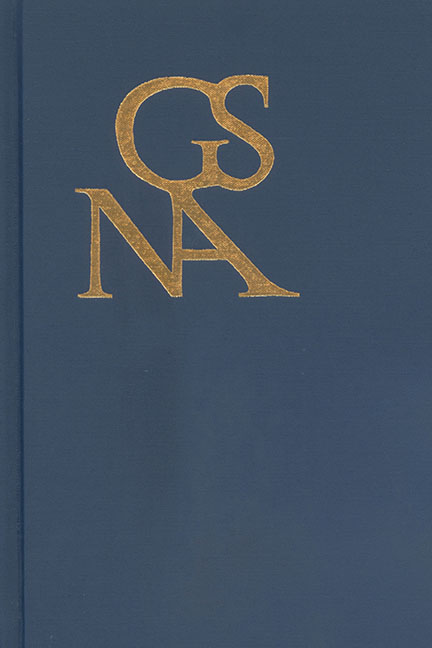Irrlichtelieren
Published online by Cambridge University Press: 28 October 2020
Summary
THE NEOLOGISM irrlichtelieren can be defined as: “An innovative and eccentric line of thought, … a lexical innovation … that configures the ‘improper’ imperative of Goethean thought … to displace the ‘proper’ way of doing philosophy (including logic, rationalist metaphysics, and transcendental idealism) by repurposing its traditional instruments of torture.” Goethe invented the word and used it only once, in the student scene of Faust I. Derived from the noun Irrlicht (will-o’-the-wisp, or ignis fatuus), it initially identifies the confused thinking of the student who has yet to learn logic,
Daß er bedächtiger so fortan
Hinschleiche die Gedankenbahn,
Und nicht etwa, die Kreuz und Quer,
Irrlichteliere hin und her. (1914–17)
So that he creep more circumspectly
along the train of thought
and not go will-o’-the-wisping
back and forth and here and there.
However, the use of will-o’-the-wisp in Faust transforms this apparent praise of logic into its opposite, so that “will-o’-the-wisping back and forth” comes to represent the epistemology actually promoted not only in Faust but also in Goethe's essays on scientific methodology and optics from the 1790s and in his massive Zur Farbenlehre (Theory of Colors) of 1810. Derived from irren (erring), the central theme of Faust, where the Lord says “Es irrt der Mensch, so lang er strebt” (317; man errs as long as he strives) and Licht (light), used consistently as an image for knowledge or truth in Goethe, as so often in the period, irrlichtelieren becomes a useful term for Goethe's process of learning truth by trial and error. It engages a series of epistemological issues typical of the period: thinking outside the box, subject/object, the relation of nature and truth, the role of representation in knowledge, and the epistemology of community formation. Irrlichtelieren not only exemplifies Goethe's tendency to heuristic rather than systematic thought (unlike that of his Romantic colleagues), but indeed embodies its own meaning— for will-o’-the-wisps and similar figures appear as characters in his (arguably) most characteristic works: Faust and the Märchen (Fairy Tale) of 1795.
- Type
- Chapter
- Information
- Goethe Yearbook 27 , pp. 337 - 344Publisher: Boydell & BrewerPrint publication year: 2020



